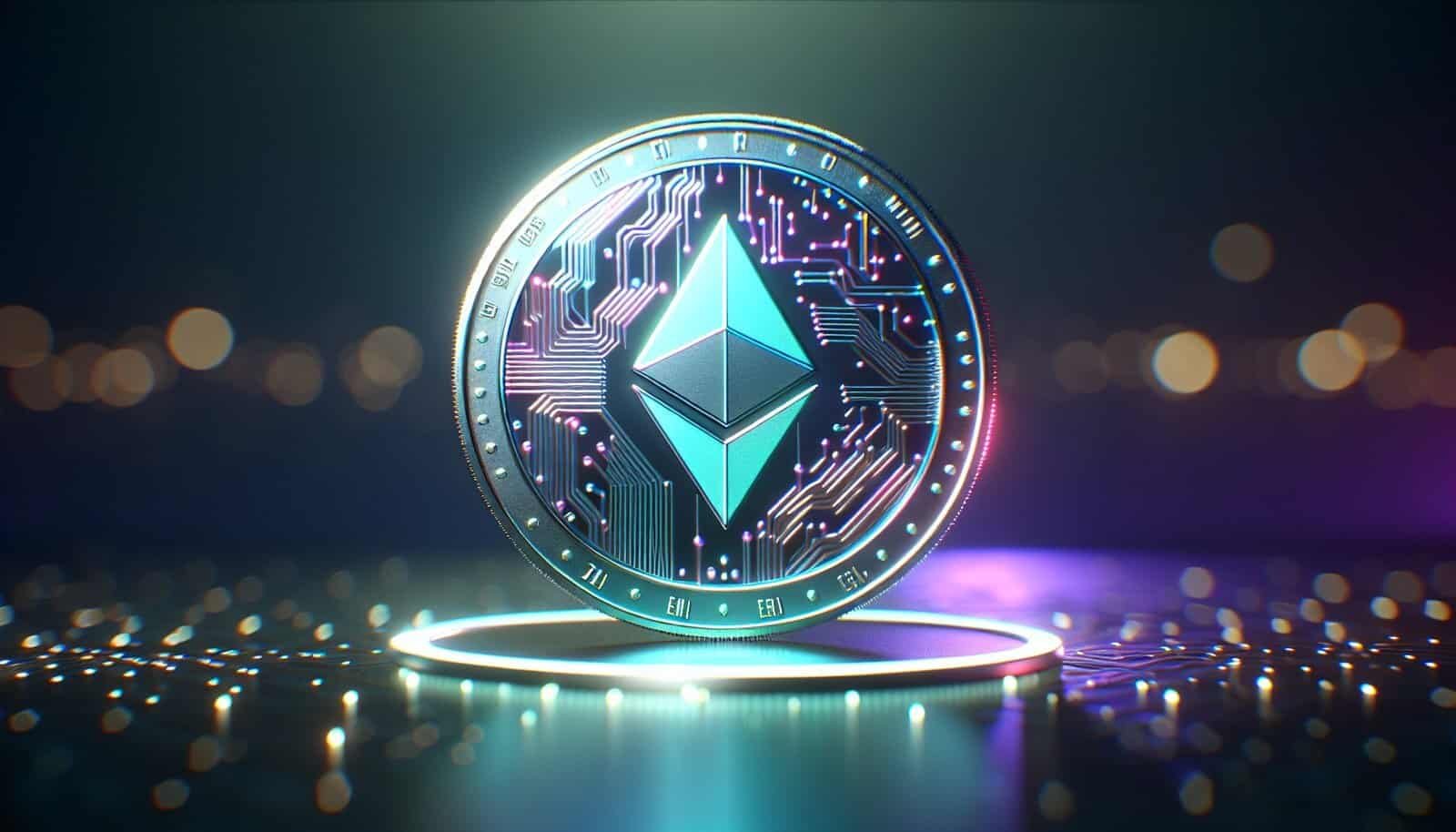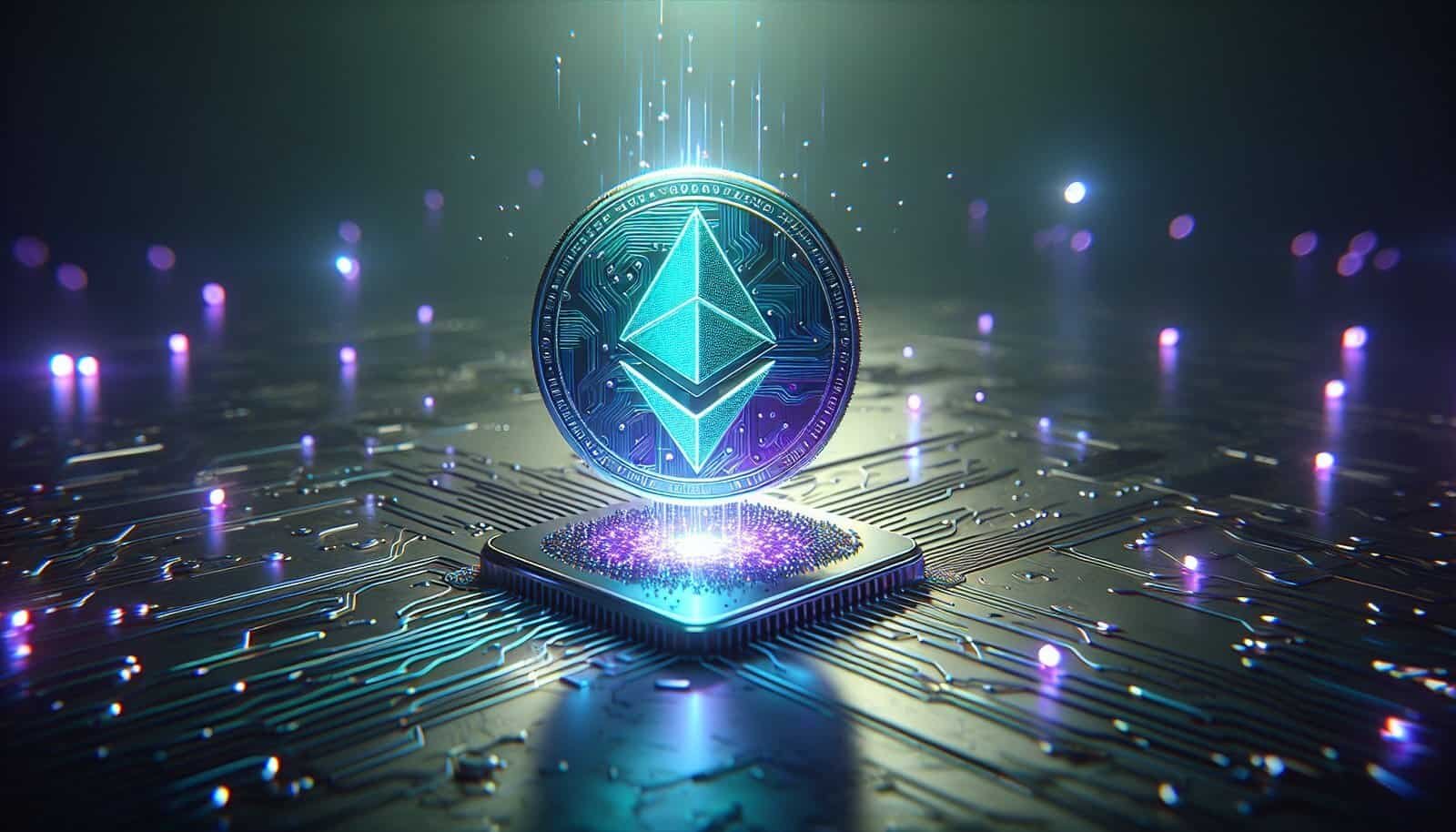Are you curious whether Solana has closed the gap with Ethereum by 2025 or if Ethereum still leads in the most important categories?
How Is Solana Performing Compared To Ethereum In 2025?
You’re looking for a clear, actionable comparison between Solana and Ethereum in 2025. This article breaks down technical performance, economics, ecosystem health, security, and real-world adoption so you can form your own view and make better decisions about usage, development, or investment.
Quick summary you can use right away
You’ll find Solana continues to appeal for low-cost, high-throughput applications and latency-sensitive use cases, while Ethereum remains the dominant, more conservative choice for security, decentralization, and broad institutional integration. The gap has narrowed in certain developer and UX areas, but trade-offs remain — mainly between raw performance and resilience/compatibility.
Market and adoption snapshot in 2025
You should consider both market metrics and on-chain activity when judging performance. Market capitalization and token price tell you investor sentiment, while on-chain metrics show real network usage.
The general picture in 2025: Ethereum still generally leads in total value locked (TVL) for conservative DeFi protocols and institutional interest, while Solana often wins in NFT activity volume and gaming throughput. You’ll see regional and project-level variation — some projects favor Solana for cost and speed, while others stay on Ethereum for composability and proven security.
Price and market cap trends
You want to know where capital is flowing. Price volatility remains high across both tokens, but Ethereum’s market cap tends to be larger and more stable due to broader institutional allocation and its role as a base layer for many Layer 2 ecosystems.
Institutional custody, ETFs, and cleared on-chain services often prefer Ethereum because of regulatory clarity and infrastructure maturity. Solana attracts speculative and developer capital seeking growth in Web3 gaming, microtransactions, and social applications.
On-chain activity and usage
You should look at daily active addresses, transaction count, and unique wallet interactions. Solana often reports higher transaction counts and faster confirmations, driven by microtransaction-heavy dApps and high-frequency NFT minting/events. Ethereum sees larger average transaction sizes, more complex smart contract interactions, and high-value DeFi activity.

Technical performance: throughput, latency, and fees
You’ll want to understand the raw technical differences since they drive which use cases each chain is best for.
Solana focuses on maximizing throughput and minimizing latency through its Proof of History (PoH) + Proof of Stake (PoS) design and parallel transaction processing. Ethereum’s evolution (post-merge and with Layer 2 rollups) focuses on secure settlement with high decentralization and the use of rollups to scale throughput.
Throughput (transactions per second)
You’ll notice Solana’s architecture yields higher on-chain TPS in practice — often many thousands per second under typical conditions. Ethereum base layer TPS remains lower, but you must factor in Layer 2 rollups (Optimistic and ZK rollups) which increase effective throughput dramatically for Ethereum users.
Solana: high native TPS. Ethereum: lower base TPS, much higher effective TPS via rollups.
Finality and latency
You’ll appreciate Solana’s block confirmation time and rapid finality for real-time applications such as gaming and fast trading. Ethereum’s finality is slower at the base layer, though rollups can provide faster user experiences while relying on Ethereum for settlement security.
Solana: sub-second to a few seconds finality on many transactions. Ethereum: minutes for base-layer finality, but UX improved with rollups and optimistic/zk settlements.
Fees and predictability
You’ll prefer predictable low fees for microtransactions. Solana generally offers very low fees per transaction, making it great for small payments and frequent interactions. Ethereum’s fees on the base layer remain higher but are more predictable and lower for many transactions when using Layer 2s.
Solana: lower native fees, but occasional spikes can occur during congestion. Ethereum: higher base fees historically, but Layer 2s reduce costs for most users.
Architecture and design trade-offs
You’ll need to weigh what matters more: throughput and cost, or decentralization and security. Each design involves choices that favor particular use cases.
Solana’s design principles
You’ll notice Solana emphasizes sequential timekeeping (PoH) to increase validator efficiency and enables parallel transaction processing with a focus on single-layer throughput. This reduces latency and increases TPS but increases complexity for validators and load on hardware.
This design favors apps with high transaction volumes and real-time demands, but it can create centralization pressure because validators need capable hardware.
Ethereum’s design principles
You’ll see Ethereum favor decentralization and economic security. With the transition to PoS and emphasis on rollups, Ethereum separates security and execution: the base layer secures state and settlements, while layer-2 networks handle most execution.
This design gives you strong composability, a rich developer ecosystem, and lower systemic risk when compared to single-layer throughput-focused architectures.
EVM compatibility and programmability
You’ll find Ethereum’s EVM and broad developer tooling to be industry standard, making porting and composing smart contracts straightforward. Solana uses different runtime models and languages (notably Rust and C/C++), requiring different developer skills and tooling, though EVM compatibility layers exist and continue to improve.
Ethereum: ubiquitous EVM tooling and Solidity ecosystem. Solana: Rust-based, high-performance programs — learning curve for many developers but rewarding for performance-critical apps.

Developer ecosystem and tooling
You’ll base a lot of your choice on the availability of libraries, SDKs, developer support, and onboarding friction.
Developer activity and onboarding
You’ll find Ethereum still has the largest developer base overall, with vast resources, audits, tooling, and community support. Solana’s developer community is growing rapidly, especially in areas like gaming and NFT tooling, but the skill set can be different (Rust/C) and fewer general-purpose DeFi libraries exist compared to Ethereum.
If you’re a developer, choose Solana when you need ultra-high throughput and are comfortable with Rust. Choose Ethereum for composability and the richest set of pre-built contracts.
Tools and infrastructure
You’ll rely on good wallets, explorers, testnets, and debugging tools. Ethereum benefits from many mature tools (Truffle, Hardhat, Ethers.js, Infura/Alchemy). Solana has improved its toolchain (Anchor, Solana CLI, RPC nodes) but you’ll still find fewer plug-and-play integrations in some sectors.
DeFi, NFTs, and application types
You’ll evaluate chains by the applications you want to use or create. Different patterns have emerged by 2025.
DeFi and TVL
You should look at TVL as a proxy for DeFi activity. Ethereum continues to lead in conservative DeFi (lending, derivatives, stablecoin primitives) where composability and security are crucial. Solana attracts newer financial primitives that need speed and low fees, but often with different risk characteristics.
You’ll see cross-chain bridges being used to move liquidity, but bridging introduces counterparty and smart contract risk.
NFTs and gaming
You’ll likely prefer Solana for high-volume NFT mints, gaming economies, and frequent microtransactions because of lower fees and faster confirmations. Ethereum maintains dominance in high-value collectibles and well-established NFT marketplaces due to liquidity and brand recognition.
Social and micropayments
You’ll see Solana favored for social platforms and micropayment models because per-interaction costs are minimal. Ethereum Layer 2s have also started supporting these use cases more economically.

Security, outages, and resilience
You’ll place safety at the top if you’re handling user funds or critical infrastructure. Both networks have different security profiles.
Security model and attack surface
You’ll value Ethereum’s longer history and broader review of its protocol and smart contract ecosystem. Its security assumptions are well-studied and its validator set is large and globally distributed.
Solana’s design introduces novel elements (PoH, parallel processing) that increase performance but may create complex failure modes. In the past, Solana experienced network slowdowns and outages that highlighted operational complexity. By 2025, many of these issues have been mitigated, but you should still monitor long-term stability metrics.
Frequency and impact of outages
You’ll notice that outages on any base layer are costly for reputation and for dApp continuity. Solana’s past outages caused users to distrust availability in some moments; the team and network operators have focused on improving redundancy and monitoring. Ethereum’s base layer has been more stable historically, but Layer 2s have had their own issues.
If your application is mission-critical, you’ll prefer networks with the highest proven uptime and broad validator diversity.
Decentralization and validator economics
You’ll care about who runs validators and how easy it is to participate, because decentralization affects censorship-resistance and resilience.
Validator counts and distribution
You’ll find Ethereum typically has a larger, more geographically diverse validator set supported by many staking providers and custodians. Solana validators often require more powerful hardware, resulting in fewer but larger validators, which can raise centralization concerns.
You’ll need to evaluate whether validator concentration poses a real risk for your use case.
Staking and incentives
You’ll stake tokens to participate in security and earn rewards. Both networks provide staking, but the dynamics differ: Solana validator requirements can create larger minimum hardware and energy considerations, while Ethereum’s staking ecosystem includes a broad range of providers and liquid staking options.
You’ll check staking economics (rewards, slashing rules, lockup periods) to choose what matches your risk tolerance.

Interoperability and bridges
You’ll want to move liquidity and users across chains. Bridges and cross-chain messaging play an important role in 2025.
Bridge security and UX
You’ll use bridges but must account for risk. Bridges that custody assets centrally or rely on multisigs may provide fast UX but carry counterparty risk. More secure bridges use federated or trust-minimized mechanisms, but often at the cost of throughput or complexity.
Solana-Ethereum bridges have improved, but you should still assume bridge risk and prefer bridges with strong audits and a history of secure operations.
Cross-chain composability
You’ll appreciate Ethereum’s ability to compose across many layer-2s and sidechains. Solana projects increasingly support cross-chain flows, but composability isn’t yet as seamless as the EVM-based ecosystems where smart contracts can call a vast set of existing protocols directly.
Costs to developers and operators
You’ll consider development costs, infrastructure, and ongoing operational burden.
Running nodes and validators
You’ll pay more attention to hardware requirements for Solana validators, which can be higher due to throughput demands. Ethereum validator hardware is more modest, making it easier to participate in securing the network if you meet staking requirements.
Developers running indexers, RPC nodes, and analytics infrastructure may find different cost dynamics depending on the ecosystem and traffic patterns.
Gas and execution costs for users
You’ll notice Solana keeps per-transaction costs low, which reduces friction for end-users. On Ethereum, you’ll often use Layer 2s to achieve similar user cost profiles. If you’re designing an app with heavy interaction, you’ll need to factor in gas optimizations or Layer 2 deployment.

Regulatory and institutional adoption
You’ll be sensitive to compliance needs if you’re building products or managing funds.
Institutional interest and custody
You’ll find institutions generally prefer the network with clearer regulatory frameworks and mature custody solutions. Ethereum has a head start in institutional custody and regulatory engagement, translating to more institutional DeFi and product integrations.
Solana has attracted venture-backed growth and commercial partnerships, but institutional uptake depends on custody providers and regulatory clarity in specific jurisdictions.
Compliance tooling and audits
You’ll look for AML/KYC integrations and audit services. Ethereum’s ecosystem has more established compliance tooling given its long-standing position in the market. Solana continues to grow support for these services.
MEV, censorship resistance, and fairness
You’ll care about miner/validator extraction and whether the network design allows front-running or censorship.
MEV dynamics
You’ll find MEV exists on both networks but manifests differently. Ethereum’s long history of MEV research has spawned solutions (Flashbots, fair sequencing) and an active academic and industry community working on mitigation. Solana’s rapid execution and parallelism change MEV behavior and sequencing incentives, and mitigations are evolving.
If you’re building front-running sensitive applications, you’ll monitor MEV mitigation tools and sequencing guarantees on your chosen chain.
Censorship resistance
You’ll evaluate how easy it is for a small set of validators or block producers to censor transactions. Ethereum’s validator diversity generally increases censorship resistance. Solana’s validator concentration may pose higher risk, so you’ll want to track validator distribution and governance measures.
Real-world case studies and examples
You’ll benefit from practical comparisons that show how each chain performs in live use cases.
Example: high-volume NFT drops
You’ll see projects launching high-quantity NFT drops on Solana because mint fees and confirmation times are low, lowering friction for collectors. Ethereum projects often use Layer 2s or batch mints to achieve similar performance while maintaining Ethereum’s security for settlement and resale liquidity.
Example: on-chain exchanges and trading
You’ll find Solana-based order books and AMMs offer near-instant execution for retail trading and in-game asset exchanges. On Ethereum, most high-frequency activities have migrated to Layer 2s or centralized alternatives, but cross-protocol settlement occurs on Ethereum’s secure base layer.
Comparison table: quick reference
You’ll appreciate a compact comparison to see trade-offs at a glance. This table summarizes core differences you’ll care about when choosing between the two networks in 2025.
| Category | Solana (2025) | Ethereum (2025) |
|---|---|---|
| Native throughput | Very high (thousands TPS typical) | Lower base TPS; much higher via Layer 2s |
| Finality & latency | Fast finality, low latency | Slower base-layer finality; UX improved with rollups |
| Fees (native) | Typically very low | Higher base-layer fees; Layer 2s lower costs |
| Developer tooling | Growing, Rust-focused; Anchor, Solana SDKs | Mature, Solidity/EVM ecosystem and vast tooling |
| DeFi TVL | Strong in newer primitives; smaller than Ethereum overall | Leading TVL, especially for conservative financial products |
| NFTs & gaming | High-volume, low-fee activity | High-value marketplaces and strong resale liquidity |
| Security maturity | Improving; some historic outages and mitigations | More time-tested, broader audits and ecosystem review |
| Validator decentralization | Fewer, more resource-intensive validators | Larger, more distributed validator set |
| Interoperability | Bridges improving; cross-chain integrations growing | Extensive Layer 2 and interop ecosystem |
| Institutional adoption | Growing but constrained by custody options | Stronger institutional custody and engagement |
Risks, headwinds, and what you should watch
You’ll want to know the main risks that could affect performance or your decision.
Network stability and outages
You’ll monitor network uptime metrics and incident postmortems. Solana has had operational incidents historically; the trajectory by 2025 shows improved robustness, but you should keep contingency plans for downtime if your app needs high reliability.
Centralization and censorship risk
You’ll evaluate validator concentration and governance. If censorship resistance is critical for your application, prioritize networks with more distributed validator sets and clearer anti-censorship mechanisms.
Smart contract risk and audits
You’ll require strong auditing, testing, and formal verification for high-value contracts. Both ecosystems have active audit firms, but you’ll want to verify firm experience within the specific chain and tooling.
Regulatory uncertainty
You’ll track regulatory developments across jurisdictions. Changes in policy can affect listings, custody, and institutional adoption for either chain.
Investment and strategic considerations for you
You’ll likely be investing time, capital, or development resources. Here are practical considerations.
If you’re a developer
You’ll pick Solana when performance and low transaction cost are essential (gaming, high-frequency NFT platforms, microtransactions). You’ll pick Ethereum (or Ethereum + L2) for maximum composability, broad user base, and conservative financial applications.
If you’re a product owner or operator
You’ll prototype on the chain that best matches UX needs. If your product must remain live at all times with minimal downtime, lean toward networks with proven uptime. For viral NFT drops, choose the low-fee network unless long-term resale liquidity on Ethereum is a priority.
If you’re an investor
You’ll diversify exposure based on risk appetite. Ethereum often serves as a relatively safer, long-term infrastructure bet, while Solana can represent higher volatility and higher upside for performance-focused innovations.
How to monitor real-time performance in 2025
You’ll need practical metrics and tools to track activity and health.
- Follow on-chain metrics: daily active addresses, transaction counts, fees, mempool backlog.
- Use blockchain explorers and analytics providers that offer historical data and alerts.
- Monitor validator distribution and staking metrics for decentralization signals.
- Track bridge flows and TVL to understand capital movement.
Set alerts for unusual increases in transaction failures, mempool spikes, or validator churn.
Frequently asked questions (short answers)
You’ll appreciate concise answers to common concerns.
Q: Is Solana as secure as Ethereum? A: They have different security profiles. Ethereum’s longer track record, wider review, and validator diversity give it a stronger historical security posture. Solana’s security has improved, but you should account for different failure modes and operational complexity.
Q: Which chain is cheaper for users? A: Solana typically offers cheaper native transactions. Ethereum Layer 2s provide competitive user-level costs for many use cases.
Q: Should you build for both networks? A: You’ll reduce single-chain risk by targeting both when resources permit. Cross-chain architecture increases complexity but expands your user base.
Q: Are bridges safe? A: Bridges vary in risk. Use bridges with transparent designs, audits, and insurance where possible.
Outlook and scenarios for the next 12–36 months
You’ll want plausible futures to plan your strategy.
Scenario 1 — Convergence: You’ll see better tools and interoperability, with Ethereum rollups and Solana optimizations reducing their gap for many use cases. Developers will focus on multi-chain deployments.
Scenario 2 — Specialization: You’ll see each chain dominate specific niches — Ethereum for conservative DeFi and settlement; Solana for high-throughput gaming and social microtransactions.
Scenario 3 — Infrastructure shake-out: You’ll experience market consolidation where infrastructure providers and bridges that fail to maintain security or uptime lose user trust, favoring platforms with stronger governance and reliability.
Practical checklist before you act
You’ll want a short, actionable checklist before choosing a network:
- Define your user experience requirements (latency, fees, uptime).
- Assess developer skill availability (Solana/Rust vs Ethereum/Solidity).
- Evaluate security and audit needs for smart contracts.
- Choose bridging strategies and test them thoroughly.
- Consider long-term composability needs and possible migration costs.
Closing thoughts
You’ll find the choice between Solana and Ethereum in 2025 depends on the trade-offs you’re willing to accept. Solana offers high throughput, low fees, and attractive UX for specific, high-volume applications. Ethereum provides a robust, mature platform with deep liquidity, extensive tooling, and strong institutional integration — especially when combined with Layer 2s for scaling.
By focusing on your priorities — whether that’s latency, cost, composability, or security — you’ll make better decisions about where to build, invest, or transact. Keep monitoring on-chain metrics, validator health, and the evolving cross-chain landscape so your strategy stays current in a rapidly changing ecosystem.
